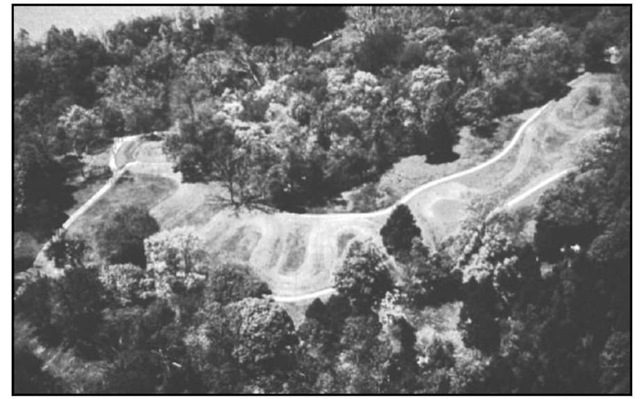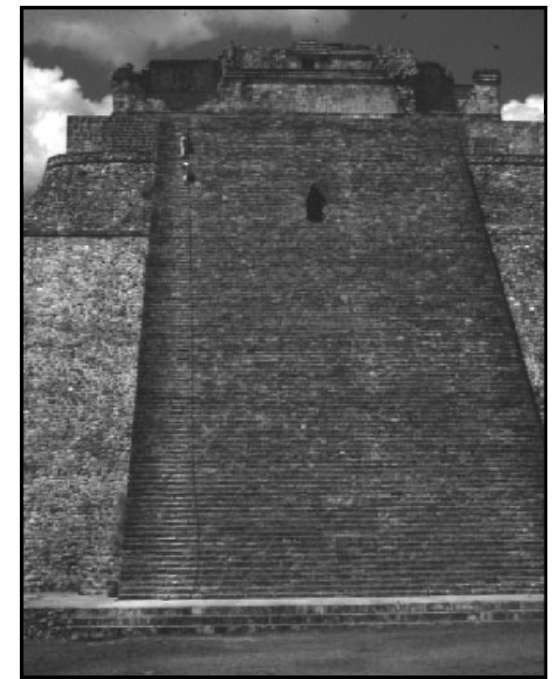Ualuvu levu
In Pacific island myth, a cataclysmic flood that occurred after the beginning of time, engulfing some territories, while sparing the mountain peaks of others. The deluge was said to have carried an ancestral people from their homeland at Nakauvadra throughout all parts of Fiji. Interestingly, Degei, an angry spirit that caused the Ualuvu levu, took the form of a serpent in the sky, an allusion to a destructive comet found in many other cultures around the world.
Uassu
Deluge hero of several Amazon tribes—the Abederys, Katauhys, and Parrarys—in eastern Brazil. Tradition states, “Once on a time, folk heard a great rumbling above and below ground [exploding meteors and earthquakes]. The sun and moon turned red [ash fall]. Our forefathers heard a roar and saw darkness ascending from the Earth to the sky [volcanism], accompanied by thunder and heavy rains which blotted out the Earth and made day into night. The waters rose very high, until the Earth was sunk beneath them.” Uassu and his wife alone survived when they climbed to the top of a tall
tree.
U Mamae
The Quiche Mayas’ Chilam Balam reports that “the wise men, the Nahuales, the chiefs and leaders, called U Mamae ["the Old Men"], extending their sight over the four parts of the world and over all that is beneath the sky, and, finding no obstacle, came from the other part of the ocean, from where the sun rises, a place called Patulan. Together these tribes came from the other part of the sea, from the east, from Patulan.” The civilizing mission of these U Mamae and their arrival over the Atlantic Ocean leave little doubt that they came from the same island capital described by Plato, a conclusion broadly underscored by the obvious philological resemblance between the Quiche “Patulan” and the Greek “Atlantis.”
U-Mu
Literally “He of Mu,” Tahitian for “high priest,” an apparent linguistic heirloom from the sunken Pacific Ocean kingdom of Mu.
Unnefer
“He Who Is Continually Happy,” an epitaph for the Egyptian Osiris in his role as the god of resurrection, a concept originating in Atlantis. The final scene of The topic of Gates, an illustrated scared text inscribed on the alabaster sarcophagus of Pharaoh Sety I, at Abydos, depicts the distended body of Osiris encircling Sekhet-aaru, the Egyptian “Atlantis.”
According to Tibetan records examined by James Churchward around the turn of the 20th century, Unnefer, having been educated in the Navel of the World mysteries, undertook a worldwide mission to spread his own interpretation of the cult. Churchward concluded that the Osirian concept of survival after death was misunderstood and degraded by the Egyptians into the lucrative business of mummification. Unnefer is described in Egyptian myth as “a world traveler.”
Unu-Pachacuti
Literally, “The World Overturned by Water,” the Inca version of the Great Flood, associated with the penultimate Atlantean destruction in the early 17th century b.c. and the coming of a prominent culture-bearer, Thonapa.
Unuycit
Mayan for the Great Flood that destroyed a former “world” from which the founding-fathers of Mesoamerican Civilization sailed to Yucatan.
Ushnu
The central plaza, today’s Plaza de Armas, of Cuzco, Peru, the Incas’ capital and “Navel of the World,” where ceremonies were held to commemorate the Great Flood. A variety of offerings—water, milk, fermented cactus juice, beer, etc.—was poured into the Ushnu at the center of a ceremonial area known as the Haucaypata. Ushnu was a poetic metaphor signifying the ability to consume prodigious amounts of liquid, and referred to someone drinking copious amounts of alcohol without getting drunk. It was into this ritual hole in the ground that the waters of the Deluge were said to have drained after the arrival of the Ayar-aucca, who brought civilization to the Andes in the ancient past. The Ushnu was believed to be the entrance to the sacred underworld.
Precisely the same significance was attached by the Etruscans to holes dug into ground at the precise midpoints of their cities, such as Tarquinia or Populonia. Each hole was referred to as a mundus, a feature for the ritual deposit of holy water commemorating the Deluge. Identical offerings to a shared purpose were made at the Greek Hydrophoria and by the Phoenicians at Hierapolis, in Syria. Among the Anasasi, Hopi, and other native peoples of the American Southwest, ritual players in an ancestral ceremony were doused with water, as they tried to climb up out of an underground chamber known as a kiva. They symbolized the “emergence” of survivors from the Great Flood.
The vast cultural and geographical differences separating the Inca, North American Indian, Etruscan, Greek, and Phoenician participants in these sacred dramas contrasts with their close similarity, which may only be explained in terms of an actual experience shared independently, but in common by them all.
There may be more than a phonetic relationship between the Inca Ushnu and the uniquely oval Maya pyramid Uxmal (pronounced ush-mal), even though these languages have nothing else in common. Perhaps both shared an Atlantean word describing the Deluge that destroyed Atlantis.
Urashima-Taro
According to Japanese folklore, a boy whose compassion for an afflicted turtle saved its life. In gratitude, the creature took him to the bottom of the sea, where he was the guest of friendly spirits in a magnificent palace, the center of a once-powerful kingdom, before its tragic demise beneath the waves. As a parting gift, he is given the Peach of Immortality.
Plants or fruits (particularly peaches) are common elements in Asian, as well as Western myths about sunken, antediluvian civilizations. The very old legend of Urashima-Taro is today widely regarded as a reference to the lost kingdom of Lemuria.
Uti-Mu
Site of an early landing by racially alien culture-bearers among the Maldive Islands, in the Indian Ocean, at the equator. The name derives from their sunken homeland, the lost Pacific civilization of Mu.
Flood hero of the Babylonian Deluge. Warned in advance of the coming disaster by Anki, the god of wisdom, Utnapishtim built a ship for his family and livestock. When the flood came, they rode out the raging seas until their vessel finally came to rest on Mount Nizir, in Mesopotamia.
The Babylonians traced their direct descent from Utnapishim. He is associated with the Late fourth-millennium b.c. geologic upheavals which prompted mass migrations of Atlanteans from their oceanic homeland throughout the world.
Uxmal
“Thrice-built” is the designation of a ceremonial center raised by the Mayas in Yucatan. Local legends recount that its oval pyramid was constructed by a dwarf sorcerer after a great flood; hence, its name, “Pyramid of the Magician.” The elliptical design was intended to simulate the cosmic egg, repeated in a frieze on its flanks, where it is shown regurgitated from the mouth of a serpent. The same image appears some 1,500 airline-miles away, atop a high ridge in the Ohio Valley, at the Great Serpent Mound.

A proper perspective of Ohio’s Great Serpent Mound, the emblem of Atlantean spirituality, may only be obtained from an aerial vantage point.
An identical motif was emblematic of the Pelasgians, a “sea people” from Atlantis, who brought civilization to the Eastern Mediterranean. Even earlier, the egg-serpent symbol originated with the Atlantean Navel of the World mystery cult. Its practitioners regarded the snake as a metaphor for the immortality of the human soul, based on the serpent’s ability to slough off its old skin for a new one. The egg was the omphalos, the “Navel Stone,” signifying life perpetually reborn from the self-renewing demiurge implicit in the snake.
The recurrence of this imagery throughout Atlantis’ former sphere of influence (the Atlantean kingdom of Azaes dominated Yucatan) implies that the tenets of its chief mystery cult survived and flourished among the Mayas, whose Uxmal pyramid embodies its esoteric symbols.The monument’s legendary dwarf is perhaps reflected in the Old World Cabiri. According to the Carthaginian writer Sanchoniathon, these were gods descended from the Rephaim, or Titans, “that is, Atlas and his kin,” and worshiped in sacred mysteries at Samothrace, Thebes, Macedonia, Lemnos, Phrygia, together with parts of the Peloponnesus (Spence, 174). The Cabiri themselves were envisioned as dwarves, great builders, and metallurgists armed with hammer tools, through which they were connected to Hephaestus, the divine artificer.
A pre-deluge antiquity associated with the Cabiri and the similarity of their cult to the Osirian mysteries underscores an Atlantean provenance. These are the same esoteric principles sculpted in serpentine symbolism on the flanks of
Uxmal’s foremost structure. Yucatan’s “Pyramid of the Magician,” so unique among all the other sacred architecture of Maya Civilization, appears to have been built by descendants of cult-bearing immigrants from Atlantis—descendants who preserved and monumentalized the Cabiri tenets of spiritual regeneration for many centuries after the Atlantis catastrophe.
The entire ceremonial complex is oriented to various risings and settings of Venus, the “star” associated with Kukulcan, the fair-haired “Feathered Serpent,” who brought civilization to Yucatan from across the Atlantic Ocean. This symbolic celestial alignment accents the post-deluge, Atlantean character of Uxmal’s founders and users.

The massive stairway fronting Uxmal’s Pyramid of the Magician.
